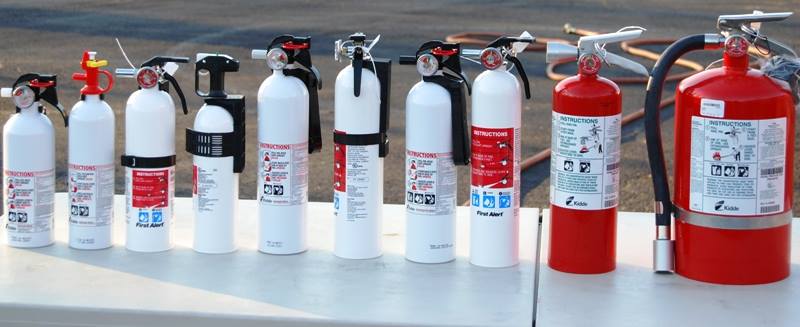
USCG’s New Fire Extinguisher Rules Coming Into Effect This April
To the uninitiated, dealing with a boat fire might seem easy: You’re surrounded by water. But we all know that isn’t the solution. Boat fires are a very real danger to you, your passengers, and your boat. Whether your boat is made of wood, fiberglass or composite material, even aluminum or steel, boats are full of flammable materials and will burn very quickly. Even without the flames, the toxicity in the fumes can be deadly. That’s why we all need to carry fire extinguishers on board, and be up to date with the latest rules regarding the correct type for our particular vessel.
New fire extinguisher regulations are going into effect on April 20, 2022, with the major change being that both disposable (non-rechargeable) and rechargeable units that are more than 12 years past their manufacture date are no longer considered serviceable and will need to be replaced with a new extinguisher. And, of course, they need to be the type specified for your vessel length, and be labeled for marine use.

BoatUS has prepared a simple guide that will help you determine if you need to upgrade your equipment.
If you own a boat that is model year 2018 or newer, you may need to replace your fire extinguishers.
- In addition to meeting the carriage requirements for the correct number of extinguishers for the size of your boat, they must be labeled as 5-B, 10-B or 20-B; extinguishers labeled with B-I or B-II only are no longer acceptable.
- Extinguishers must not be more than 12 years old according to the date of manufacture stamped on the bottle.
- You only have to get new ones if yours are no longer serviceable. Good serviceable conditions are as follows:
– If the extinguisher has a pressure gauge reading or indicator, it must be in the operable range or position.
– The lock pin must be firmly in place.
– The discharge nozzle must be clean and free of obstruction.
– The extinguisher must not show visible signs of significant corrosion or damage.
If you own a boat that is 2017 model year or older (between 1953-2017):
- You may keep your extinguishers labeled B-I and B-II as long as they are still serviceable, but
- If there is a date stamped on the bottle, extinguishers must not be more than 12 years old according to that date.
Depending on the size of your boat you may need more than one. Boats less than 26-ft are required to have at least one B-1 fire extinguisher on board. Boats 26- to 40-ft need to have at least two B-1 fire extinguishers on board. If the boat has a USCG-approved fire extinguisher system installed for protection of the engine compartment, then the required number may be reduced. In addition, knowing what to expect, and what to do, is critical if you expect to effectively fight a fire. Each year you need to ensure that your fire extinguishers are in proper working order, and that everyone who boards the boat knows where they are.
See the full guide here.
Here’s a short video produced by BoatUS a couple of years back that discusses some commonly held beliefs about fire extinguishers. You can also go to the BoatUS website find out more about required equipment.

The requirement and the number of fire extinguishers depend on the size of your boat. For example, a 30-foot yacht will need more fire suppression systems than a 20-foot boat.